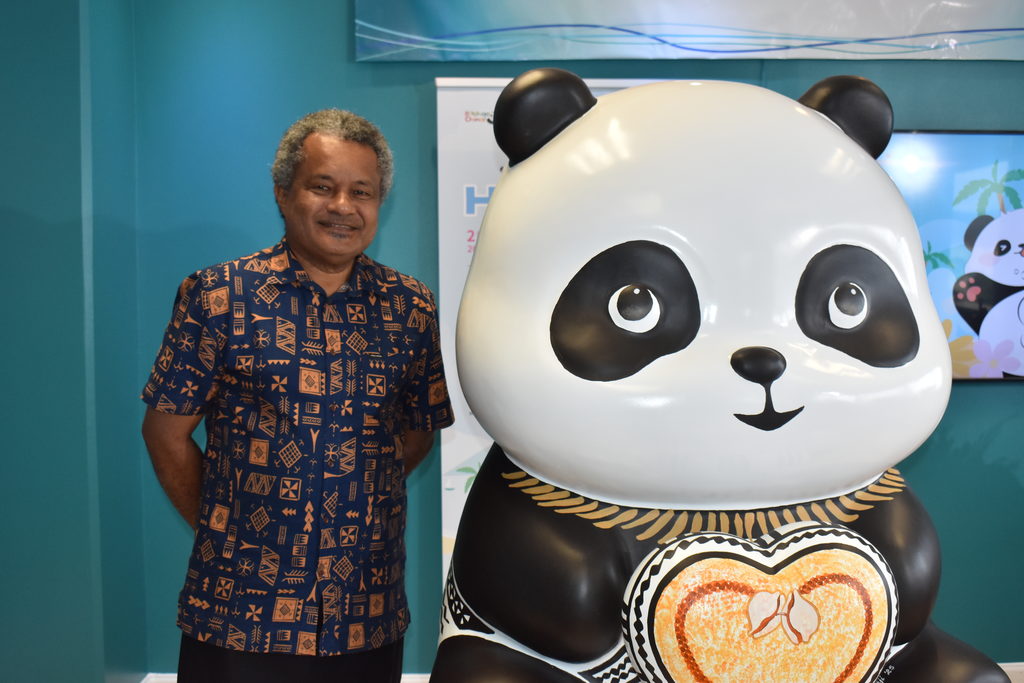ART is the highest platform for human expression and in Fiji, we’re still climbing.
Anare Somumu, 51-years-old, is a quietly ground-breaking artist whose journey from the cane fields of Labasa to the international stage defies expectations and speaks volumes about the untapped potential of Fijian visual art.
Growing up in the north, Somumu had no exposure to galleries, exhibitions, or even the materials of art.
“Unlike in Suva where you have galleries, where you can sell art,” Somumu said.
“In the north it’s all sugarcane, but somehow I had the interest. Without seeing anything, I’ve always had the interest in art.”
Born the eldest of five siblings, four of whom are artists, Somumu’s creative instincts emerged early, but had no formal outlet.
His mother a stay at home mum, and his father worked for Fiji Forest Industries, moving the family across the Northern Division.
He attended Holy Family Primary, then Holy Family Secondary School and Labasa College, before briefly pursuing science studies.
Initially intending to become a teacher, Somumu soon realised his heart wasn’t in the classroom.
Instead, he found work as a book illustrator, joining the Curriculum Development Unit in 1991, where he remained for 15 years.
“I never knew how to paint. I never went to any formal art school. Just learnt through trial and error because there was no formal art institutions in Fiji then.”
It was a chance connection with the Chinese Cultural Centre in Suva that propelled him into the next phase of his artistic career.
Through their support, his paintings began to gain international exposure, eventually reaching the eyes of curators at the prestigious International Art Biennale, one of the most respected art platforms in the world.
“It was the most major breakthrough for me.
“In Fiji, you can’t dream of that, we don’t have facilities here. You’re not recognised.”
But that dream came true.
Somumu and a fellow artist became the first from the South Pacific, including Australia and New Zealand, to exhibit at the Biennale.
It was a moment that shattered ceilings and proved Fijian artists could compete on the global stage, even without institutional support.
“That proves we have potential. It only needs to be exposed.
“If it wasn’t for them, nobody would notice that we have potential because Fiji only recognises rugby.
“Imagine how far Fijian artists can come if we take a fraction of funding for rugby and dedicate it to art in Fiji.”
Since returning, Somumu has shifted focus to mentoring the next generation, but with a dose of realism.
“The advice I would give is not to do art full-time.
“Find a real job for a regular income and do art.”
He reflects on his own struggles, periods of financial instability and creative frustration, which strengthened him, but which he doesn’t wish on younger artists.
“For me, it’s made me a stronger artist, but I wouldn’t wish that on the young ones growing up or aspiring to be artists.”
Now mentoring aspiring artists and advocating for stronger arts infrastructure, Somumu is a living bridge between Fijian artistic potential and global recognition.

